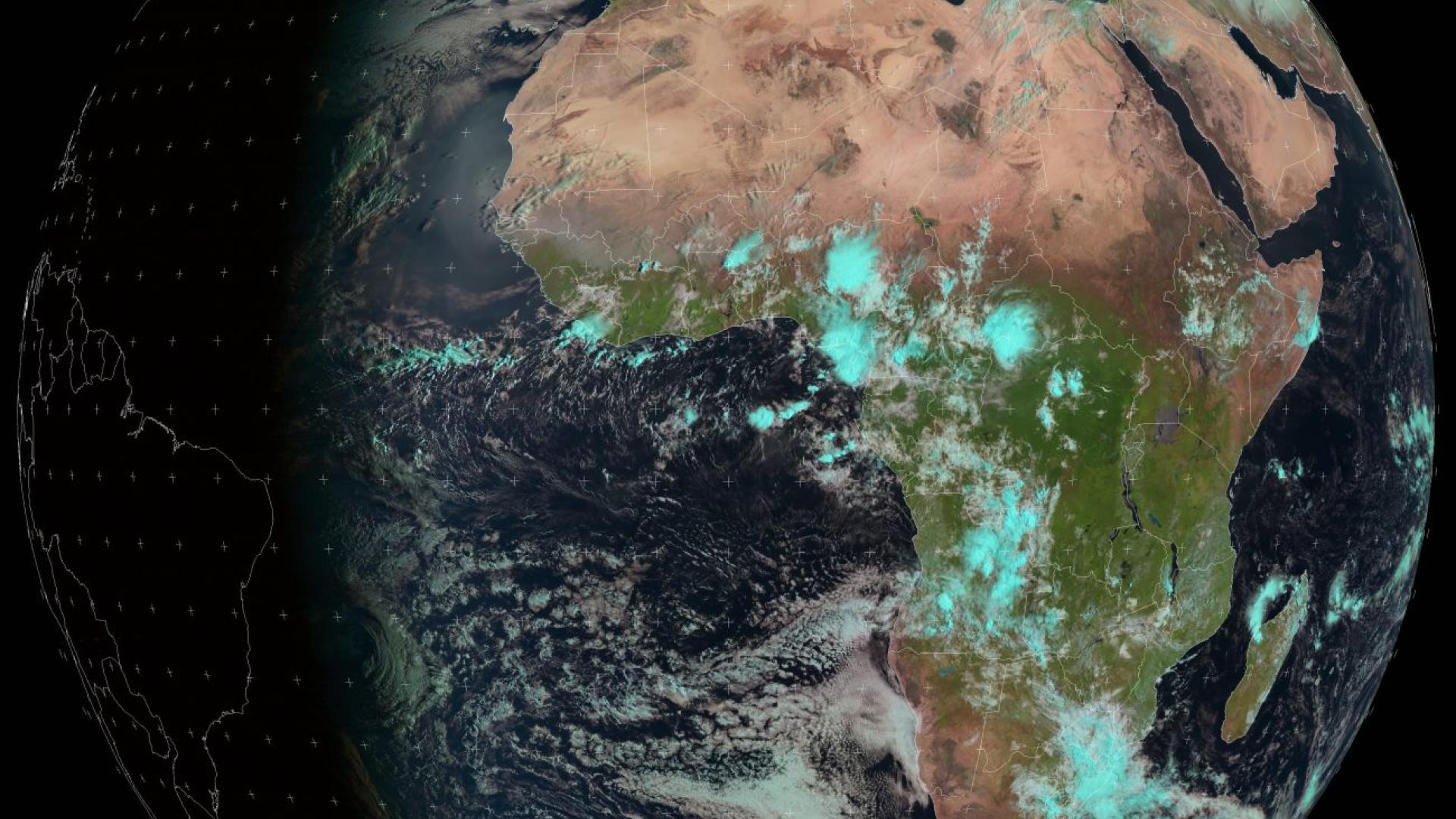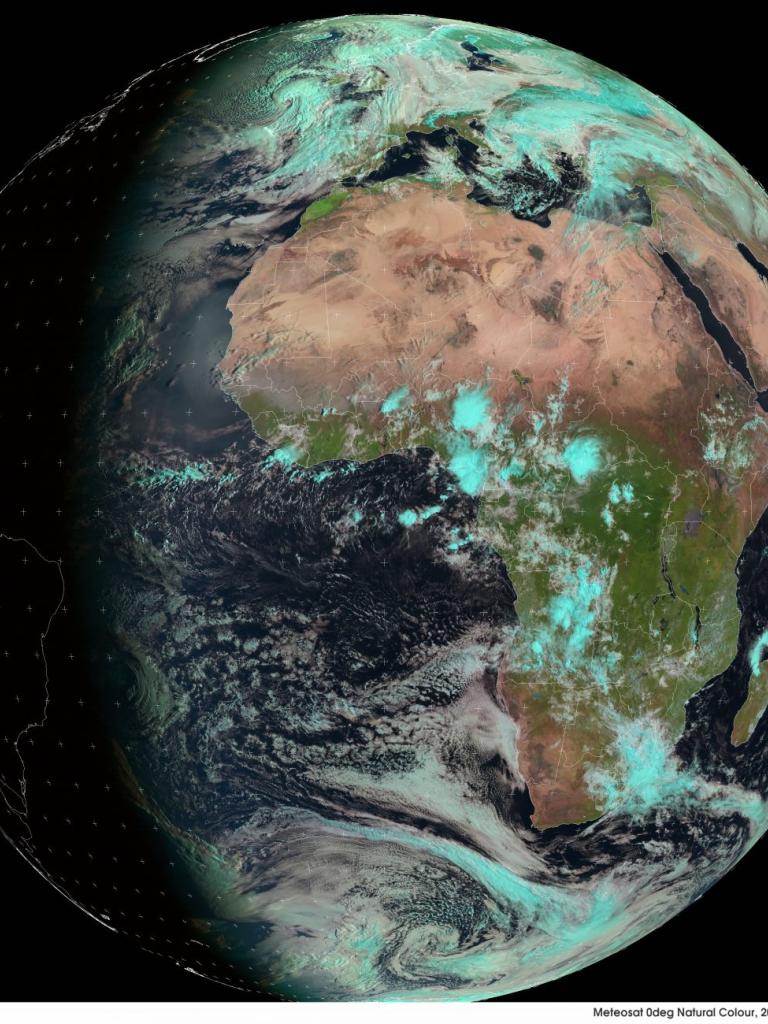
Becoming weather ready and climate smart
“Weather ready, climate smart” is the theme of this year’s World Meteorological Day.


How close are we to being weather ready and climate smart? What more needs to be done?
08 February 2021
23 March 2018
We spoke to EUMETSAT Chief Scientist Dr Kenneth Holmlund to find out.
The role of EUMETSAT
As an actor within the meteorological community, EUMETSAT contributes to the added-value chain which ranges from observations, to modelling, forecasts and delivery of information to decision-makers. EUMETSAT stands at the beginning of this complex chain, operating meteorological and environment-monitoring satellites and disseminating accurate observations, products and data.
“For us, what is important is to understand what is needed for the downstream applications and services and also to anticipate what requirements there will be in the future,” Ken said.

“In terms of the changing climate, weather requirements are also changing and we need to understand the impacts of that on the required information, data and science. “For example, there is a lot of discussion today with respect to weather extremes and how weather extremes will evolve as a consequence of a changing climate.
“Typical examples given are bigger and more frequent tropical storms and heat waves. We need to ensure we are able to address this properly, to ensure our observations can meet future needs.” Part of this will require that EUMETSAT is involved in the development of specific products from its data, maximises the benefits from its existing and future satellite missions and looks at the possibility of new missions.
EUMETSAT is collaborating with ESA and supporting the European Commission in the definition of new European capabilities like carbon and greenhouse gas monitoring and enhanced observational capacity over the arctic.
Predicting the next big storm
“It’s important for us to address weather extremes because that saves lives,” Ken said. Studies and “forensic analysis” of weather forecasts, where predicted storm paths are re-examined after the event to determine their accuracy, have shown the crucial role satellite data play. (See our previous blog post.)
The deployment of the next generation of EUMETSAT geostationary and polar-orbiting satellites from 2021 will enable us to see thunderstorms in a completely different way, Ken said. “The capabilities of the imager on the Meteosat Third Generation spacecraft will have a very dramatic impact on nowcasting and very short-range forecasting,” he said.
Images of Europe will be provided every two-and-a-half minutes with improved resolution, providing far greater detail about cloud properties. When combined with data from the new Infrared Sounder (IRS), an unprecedented view of the atmosphere at a very high temporal frequency will be obtained.
The new Lightning Imager to be flown on board MTG will add to that completely different perspective of thunderstorms. “What will happen in global numerical weather prediction and for nowcasting and very short-range weather forecasts is that we will need to develop models that look at the whole system in one,” Ken said. “Forecasters don’t have time to look at all the data individually and will need an integrated view. EUMETSAT will work with the weather services to try to understand how they are going to try to work in the future with this data.”

Requirements for climate
An area Ken believes more work is now needed is in determining requirements for data to help decision makers develop policies to cope with climate change through adaptation and mitigation measures. These requirements are not the same as those for forecasting and science applications.
The Global Climate Observing System (GCOS) has identified seven climate indicators it considers crucial – surface temperature, ocean heat, atmospheric carbon dioxide, ocean acidification, sea level, glacier mass balance and Arctic and Antarctic sea ice extent.
“Being climate smart means we have in place the data for the adaptation and mitigation measures that we need,” he said. “For example, if we have another big heat wave in Europe, will we have the same issues we had a few years ago when a lot of people were not coping well with it? “There was some good progress at COP21 in terms of understanding climate change. We have made a lot of good decisions and there are good intentions and we are trying to develop systems that can support those decisions.
“But I am personally worried that it’s too little, too late. If we don’t take things seriously, we could have a runaway system that we will have difficulties to control. “I believe space agencies are taking this seriously. We are doing our utmost but progress is slow. We will continue to need strong support from Member States and Europe and that means commitment of finance.”
Down to Earth choices
While Ken pointed out the steps space agencies are taking in a bid to improve our prospects of being weather ready and climate smart, he said individuals and countries had their own roles to play.
“We can do a lot more to address the amount of energy we are using,” he said. “There are a lot of personal choices to make and it’s not so easy to change.
“Can I really protest if I have to drive at a maximum of 130km/h? To drive faster means big engines, fat tyres, big energy consumption. Lowering the maximum speed will improve traffic flow and in the end be almost as quick as no speed limit for long distance travel. “And do so many of us really need to drive to work, one person per car? Public transport could still be significantly improved, as well as developing proper routes for bicycles.
“Another example is that we don’t seem to take plastic very seriously. Some countries have banned plastic bags, we in Europe might like to try this. Whilst a lot of plastic can be recycled or even used for energy, it still seems wasteful and causes a huge environmental stress. “Things can be done at different levels for countries that want to take things seriously.”